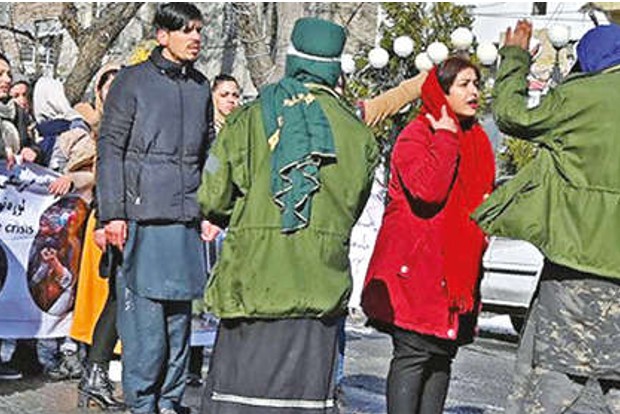Afghan women have been banned from traveling more than 72 kilometers (45 miles) without a male relative since December 26. The Taliban Ministry for Propagation of Virtue and the Prevention of Vice made it illegal for drivers to give rides to women traveling alone.
Since the Taliban swept back to power in Afghanistan in August, they have been enforcing their fundamentalist interpretation of Islam. In spite of trying to rebrand as more moderate, the group has imposed a slew of restrictions that revoke the liberties that Afghan women have won through a history of struggle and activism, and unravel the gains made over the past two decades. Following al-Qaeda’s September 11, 2001, attacks in New York and Washington, DC, the United States invaded Afghanistan. The justifications for the war placed prominent attention on the Taliban’s misogyny. According to the administration of then US President George W. Bush, the war on terror in Afghanistan was “also a fight for women’s rights and dignity.”
That drew attention to the plight of Afghan women, which translated to international aid and funding for social programs and NGOs focused on improving women’s lives. This enabled women in urban areas, particularly in the capital, Kabul, to participate in public life in ways that were impossible under the Taliban regime.
But those changes failed to reach the countryside, where, according to data from the World Bank, about 70% of Afghans live. In the two-decade war, villages across Afghanistan have been scenes of countless clashes between Taliban-aligned groups and NATO and national forces. Rural women constantly suffered night raids, airstrikes and displacement, without getting the chance to benefit from the expanded opportunities for their counterparts in the cities.
A UN report published in July quotes rural women who say the 2020 withdrawal agreement between the United States and Taliban has meant less violence in their areas, greater freedom of movement and reduced anxiety.
The first restrictions that the Taliban introduced once they regained power mostly targeted urban and middle-class women. But they are expanding into a long list of rules, which will affect Afghanistan’s entire female population. Afghan women have been banned from traveling more than 72 kilometers (45 miles) without a male relative since December 26. The Taliban Ministry for Propagation of Virtue and the Prevention of Vice made it illegal for drivers to give rides to women traveling alone. A senior member of Human Rights Watch said that the decree prevents women from “being able to depart if they are facing domestic violence.”
In November, the Taliban banned women from appearing on TV shows and in movies and ordered female journalists and presenters to wear headscarves. Established in 2001, the Women’s Affairs Ministry was abolished by the Taliban in September. Its office now houses the Propagation of Virtue and the Prevention of Vice Ministry. The Taliban has effectively prohibited girls from receiving education higher than primary school by keeping most secondary schools for teenage girls closed, Human Rights Watch (HRW) reported in October. According to World Bank data, the proportion of girls in primary schools in Afghanistan increased from less than 10% in 2003 to 33% in 2017, while their share in secondary schools was 39% in 2017, up from 6% in 2003.
In early July, as the Taliban were seizing territory from government forces across Afghanistan, the group’s fighters stormed into bank offices in the southern city of Kandahar and ordered women working there to leave.
After taking full control of Afghanistan, the group continued to eliminate women from workplaces. In September, one of the Taliban’s senior figures told the Reuters news agency that Afghan women should not work alongside men. That statement was followed by another decree issued by the interim mayor ordering female employees of Kabul’s city government to stay home. Women accounted for 20% of the country’s workforce in 2020, according to a report released by the UN Development Program in December, and a growing number of them ran small businesses.





















